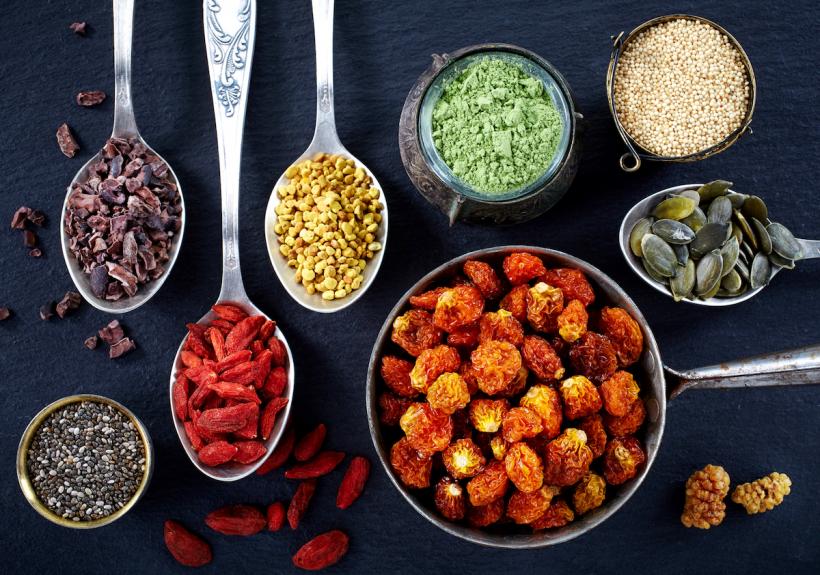
Though they don’t give you the ability to fly or powers of invisibility, superfoods can increase your energy levels and endurance.
In case you haven’t noticed, food elitism did not go out with the abolishment of the food pyramid. But before you call your broccoli a power-hungry classist, make sure you know your basic facts.
Somehow, our nutritional lingo and nutritional ego have gotten even more ridiculous with time. Suddenly, it’s like, “Oh, you’re eating corn? Like from a cob? That’s nice. I’m having some KALE while wearing my KALE t-shirt. So yeah, I guess you could say I’m a bit of a health nut.”
Cutting through the BS (not to mention the Haughty Thigh Gap Girl I’m picturing say the words above) can be quite the challenge.
So what exactly is a superfood and what is it supposed to do?
While not an actual scientific term, superfoods are those categorized as more nutrient-dense than other foods. This means they contain more nutrients per gram than whatever snack you’d pull out of Any Pantry USA.
Though they don’t give you the ability to fly or powers of invisibility, superfoods can increase your energy levels and endurance. Plus, they can aid in disease prevention. Also known as functional food, they’re able to hit more target body functions than other food groups, which is a step or two above eating for mere survival.
They contain things like clean protein, amino acids, essential fatty acids, good kinds of fat, enzymes, antioxidants, and good ol’ fashioned vitamins and minerals, all the while shielding our organs from cell damage. Shielding, now that sounds more in line with superheroes. Additionally, placebo effect or not, they can just plain make you feel better.
Common examples of superfoods include:
-
Kale
-
Tomatoes
-
Blueberries
-
Mangoes
-
Quinoa
-
Cranberries
-
Mulberries (Not just a song about a weasel? Huh.)
-
Pumpkin Seeds
-
Watermelon
-
Acai
-
Cacao aka raw chocolate aka the best news EVER
If you want a full list, there are probably several you can find somewhere out there on the Internet. However, you may want to keep reading before you jump on that bandwagon.
But wait, there’s something more super than a superfood? Say what now?
That said, a lot of experts are defining “superfood” as a mere marketing term. Many dieticians, doctors, and nutrition scientists contend that the exclusive club of superfoods is more gimmick than anything. Albeit a somewhat healthy gimmick.
Some of these professional folks have coined the term “powerhouse foods,” which are supposed to be the ultimate in nutrient density. And they have their own list, which includes watercress, Chinese cabbage, kohlrabi, chard, and other things that sound more like euphemisms than actual sustenance. Unlike the superfood list, blueberries did not make the cut, but strawberries did.
Now before you go sprouting mung beans on your kitchen counters or using words like “gut flora” and “gelatinous kombucha mother” around your friends, take a deep breath. Yes, organic foods are probably much healthier and fermented foods are the top shelf when it comes to body fuel.
But if you just want to keep it simple, eating the rainbow is always a good idea.
Cover your bases with eating fresh and eating many different kinds of things.
Bottom line: There’s no need to get overly stressed about what’s in your fridge. That would actually be the unhealthiest of all your options. You can relax. Simply remember that variety is essential. Fruits and veggies, people, fruits and veggies.








